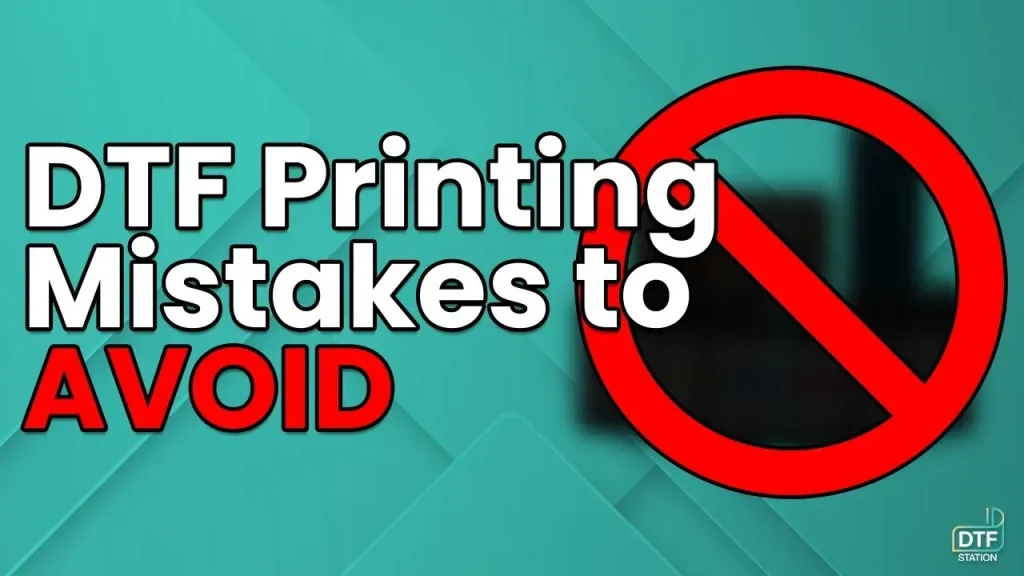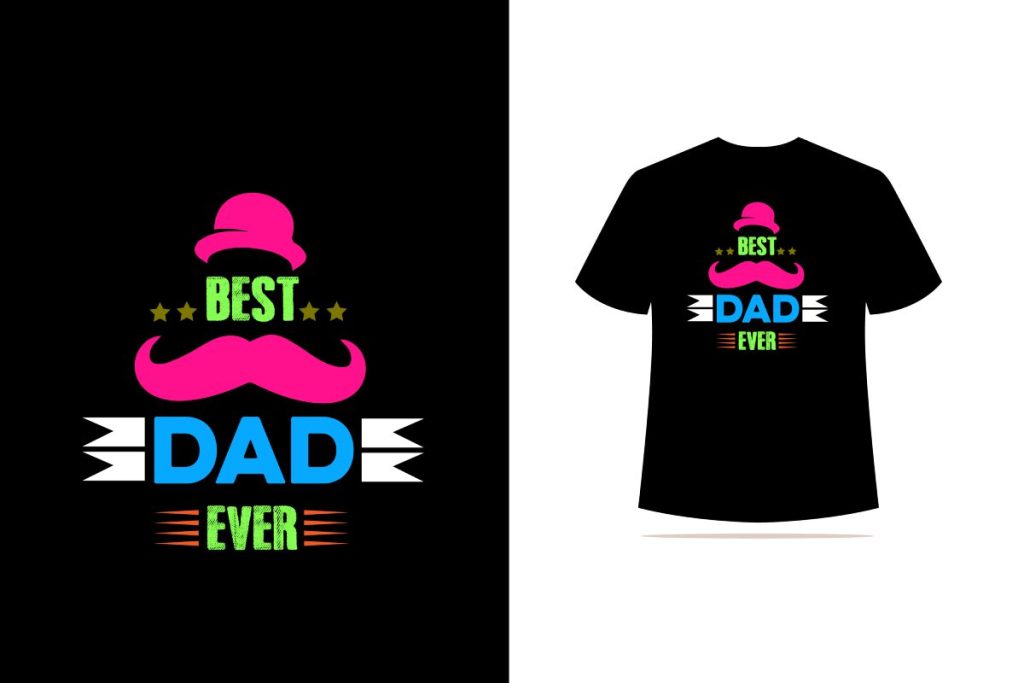When diving into the world of Direct to Film (DTF) printing, it’s essential to be aware of the **common mistakes in DTF printing** that can hinder your results. Many newcomers to this innovative printing technique often fall prey to avoidable pitfalls, ranging from inadequate pre-treatment of fabrics to using the wrong materials. Understanding these common DTF printing issues not only enhances the quality of your outputs, but it also saves time and resources. In this guide, we’ll provide you with valuable DTF printing tips to help you navigate the most frequent errors and ensure that your projects come out flawlessly. By familiarizing yourself with best practices for DTF printing, you’ll be well on your way to mastering this versatile printing method.
As the textile printing industry continues to evolve, the adoption of Direct to Film (DTF) technologies has introduced remarkable opportunities for creativity and efficiency. However, navigating the complexities of DTF printing can be daunting if you’re not aware of potential printing blunders. From selecting the appropriate film to fine-tuning equipment settings, understanding variances in production techniques is crucial. In this discussion, we will delve into common DTF printing errors that can mislead even seasoned printers and outline strategies to avoid these issues. Our DTF printing guide will serve as a resource to bolster your skills and improve your final products.
Understanding Common DTF Printing Mistakes
DTF (Direct to Film) printing has transformed the textile industry by allowing vibrant designs to be transferred on various fabrics efficiently. However, many new users often overlook essential aspects, leading to subpar results. One common mistake is neglecting the pre-treatment of fabrics before the printing process. Without proper pre-treatment, the ink may fail to adhere well to the fabric, resulting in diminished print quality and durability. This scenario highlights the necessity of understanding not only the printing technology but also the fundamental steps that ensure successful outcomes.
Another frequent error occurs when users do not choose the appropriate transfer film for DTF printing. The selection of transfer film plays a vital role in achieving desired print results. Using incorrect films can result in issues like poor color accuracy, ink bleeding, and inconsistent outputs. Knowing the specific type of film that works well with particular inks and fabrics can drastically improve print quality. Thus, always remember that each type of film has its specifications and choosing the right one is a step towards successful DTF printing.
Best Practices for DTF Printing
To ensure outstanding outputs in DTF printing, adhering to best practices is crucial. High-quality pre-treatment of the fabric, alongside the selection of the right transfer film, sets a solid foundation for the printing process. One effective practice involves meticulous research on fabric compatibility with different pre-treatment solutions and transfer films. Following the manufacturer’s guidelines regarding the use of pre-treatment agents specific to the fabric type can ultimately enhance print adhesion and overall quality.
Additionally, optimizing printer settings is another best practice that should not be overlooked. Adjusting parameters such as resolution, print speed, and ink saturation based on the specific material and film used is pivotal to achieving vibrant colors and clear images. Regular calibration and fine-tuning of printer settings can lead to significant improvement in the final print quality, ensuring that colors appear as intended and details are sharp.
Identifying and Fixing Common DTF Printing Issues
Common issues in DTF printing usually stem from a series of oversights and improper practices. For instance, failing to conduct test prints before executing large jobs can lead to costly mistakes. Test prints allow users to fine-tune settings such as color matching and ink distribution, preventing problems that might arise during full-scale operations. By investing time in small-scale testing, printers can save resources and ensure that final outputs meet expected standards.
Another common DTF printing issue is inconsistent curing of the prints. Curing plays an essential role in ensuring that the ink bonds effectively with both the film and the fabric. Neglecting this critical step could lead to designs that fade or peel off after washing. Regular monitoring of curing times and temperatures is essential for maintaining the longevity of prints. Following recommended curing practices will help preserve the integrity of designs over time.
Common DTF Printing Errors and How to Avoid Them
Understanding the common errors in DTF printing is crucial to avoiding pitfalls that could impact print quality. One major error is selecting the wrong ink type, which can lead to poor coverage and color inaccuracies. It’s vital to use inks that are specifically formulated for DTF printing to ensure optimal adhesion and vibrant colors. By sticking to compatible materials throughout the process, printers can drastically reduce errors.
Another frequent error is inadequate maintenance of DTF printing equipment. Regular cleaning of printheads and ensuring software is up to date are essential maintenance practices that can prevent clogs and printing inconsistencies. Regular maintenance checks can help identify potential issues before they escalate, preserving the printer’s quality and extending its lifespan. Establishing a maintenance routine is a best practice that every DTF printer should adopt.
Importance of Test Prints in DTF Printing
Conducting test prints is an invaluable step in the DTF printing workflow. Test prints not only allow for adjustments in color matching and resolution but also enable the identification of potential issues before commencing larger production runs. By taking the time to execute test prints, printers can identify discrepancies in color or layering that might otherwise go unnoticed during mass production.
Moreover, utilizing test prints as a part of the workflow can improve efficiency and reduce waste. By thoroughly testing settings and pre-treatments beforehand, printers can optimize their outputs and reduce the likelihood of producing flawed final products. As such, regular test prints are a simple yet effective recommendation for anyone serious about excelling in DTF printing and avoiding common errors.
Optimizing Your DTF Printing Setup
Optimizing your DTF printing setup involves understanding and configuring several critical components of the printing process. From selecting the right printer models designed for DTF applications to making sure your workspace is well-equipped, each element contributes significantly to print quality. A well-optimized setup also includes having the right software for color management and print layout, which can ease your workflow and enhance the print outcome.
Furthermore, attention to detail in the overall workspace—from lighting to fabric storage—can make a difference in achieving high-quality prints. Ensuring that the workspace is clean and organized minimizes the risk of contamination or mishaps during the printing process. A well-structured and optimized printing environment paves the way toward producing exquisite DTF prints, allowing designers to realize their creative visions effectively.
Frequently Asked Questions
What are the common mistakes in DTF printing that affect print quality?
Common mistakes in DTF printing that negatively impact print quality include inadequate pre-treatment of fabrics, selecting the wrong transfer film, and not adjusting printer settings properly. Each of these errors can lead to poor adhesion, ink bleeding, and unsatisfactory output.
How can proper pre-treatment improve DTF printing outcomes?
Proper pre-treatment is crucial for DTF printing as it prepares the fabric to accept ink. Neglecting this step can lead to issues like poor adhesion and reduced durability of the print. Following manufacturer guidelines for pre-treatment ensures vibrant, long-lasting designs.
What role does film selection play in DTF printing errors?
The selection of the correct transfer film is essential in DTF printing. Using the wrong film can result in ink bleeding, inaccurate colors, and inconsistent print quality. It’s vital to choose films compatible with both the fabric and the ink to achieve optimal results.
Why is it important to monitor curing processes in DTF printing?
Monitoring curing processes in DTF printing ensures that the ink adheres properly to the film and substrate. Ignoring this step can lead to designs that peel off or wash away. Proper curing guarantees the longevity and durability of the print, making it a critical part of the process.
What are best practices for conducting test prints in DTF printing?
Best practices for conducting test prints in DTF printing include testing different settings for color matching, ink saturation, and resolution before full production. This step helps minimize errors and saves time and resources by identifying potential issues early on.
How can neglecting maintenance lead to common DTF printing issues?
Neglecting regular maintenance of DTF printing equipment, such as cleaning printheads and checking for clogs, can lead to recurring print quality issues and longer turnaround times. Routine maintenance is vital to keeping the printer functioning optimally and avoiding costly mistakes.
| Mistake | Description |
|---|---|
| Inadequate Pre-Treatment of Fabrics | Failing to properly pre-treat fabrics can lead to poor ink adhesion and compromised print quality. |
| Wrong Film Usage | Using incorrect transfer film can result in ink bleeding and poor color accuracy. |
| Improper Printer Settings | Incorrect printer settings can negatively affect print quality and resolution. |
| Ignoring Curing Processes | Neglecting proper curing can lead to designs that peel or wash away easily. |
| Not Conducting Test Prints | Skipping test prints can result in costly mistakes during large-scale jobs. |
| Neglecting Maintenance of Equipment | Lack of maintenance can degrade print quality and disrupt workflow. |
| Overcomplicating Designs | Complex graphics can reduce printability; simpler designs improve quality. |
Summary
Common mistakes in DTF printing can severely affect the quality of your final product. By understanding and avoiding these pitfalls, such as inadequate pre-treatment of fabrics and improper printer settings, you can ensure vibrant and durable prints. Each of these mistakes can diminish not only print quality but also your overall efficiency in the DTF printing process. By following best practices and continually refining your technique, you can significantly enhance your printing outcomes and create stunning textile designs that stand the test of time.



